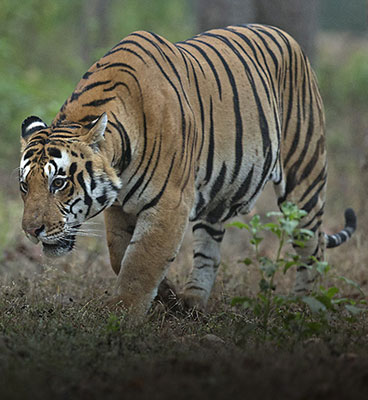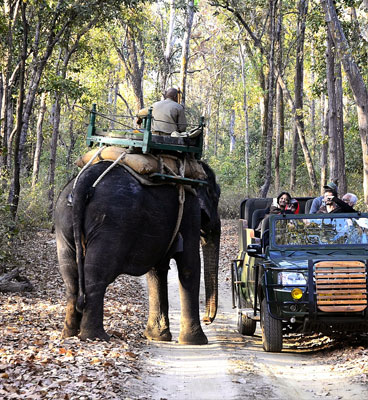Situated in the Mandla and Balaghat districts of Madhya Pradesh, Kanha National Park is popular as one of India’s most celebrated wildlife reserves, famed for its vibrant ecosystems and remarkable Bengal tiger population. A famous touristy gem on the land of Madhya Pradesh, the national park is a visual treat with its sprawling meadows, dense bamboo groves, and rich sal forests. A jeep safari through Kanha offers an unforgettable experience, giving visitors a chance to observe wildlife in its natural environment. The park is divided into two zones: the core zone, which is strictly protected for wildlife conservation, and the buffer zone, where regulated activities are permitted to maintain the balance between nature and human presence.
Core Zones of Kanha National Park
Kanha - The Kanha zone features open meadows, grasslands, and bamboo vegetation, providing excellent opportunities for wildlife sightings. One of the notable tourist attractions is Shravan Taal, a site of historical and mythological significance, believed to be where King Dashrath mistakenly killed Shravan Kumar, thinking him to be a deer.
Kisli - The Kisli Zone is distinguished by its elegant sal forests, scenic grasslands, and bamboo vegetation, creating a picturesque and diverse natural environment.
Mukki - The Mukki zone of Kanha is renowned for its exceptional wildlife sightings. Its diverse landscape encompasses sal forests, bamboo groves, and expansive grasslands, providing an ideal habitat for a variety of species.
Sarhi - Another popular core zone of Kanha, it is characterised by dry deciduous forests interspersed with expansive meadows. Sarahi can be accessed via a shared route passing through the Kisli zone, where visitors will encounter the majestic sal forests along the journey.
Buffer Zones of Kanha National Park
Khatiya - The Khatia Zone is located in the western part of Kanha Tiger Reserve, encompassing the forested areas adjacent to the core region near the Khatia entrance gate. This zone includes both forested lands and nearby villages, making it an ideal option for walk-in tourists who have not made advance safari bookings, especially when tickets for the core zones are unavailable.
Khapa - Situated southwest of Kanha Tiger Reserve, adjacent to the Mukki core zone, the Khapa safari zone offers a convenient option for tourists staying near the Mukki entrance gate. Easily accessible from nearby resorts, this buffer zone provides a serene forest experience with fewer crowds. Known for its scenic water bodies and marshy landscapes, Khapa is particularly favoured by birdwatching enthusiasts.
Sijora - The Sijore Zone is situated to the northeast of Kanha Tiger Reserve, adjacent to the Sarhi core zone, with no physical boundary separating the core and buffer areas. Visitors access the Sijore Zone through the Sarhi entrance gate, which also serves as the entry point for the Sarhi core zone.
Phen - Phen buffer zone is situated near the Mukki entrance gate of Kanha Tiger Reserve. Located in the southern region of the reserve, it lies close to the borders of Madhya Pradesh and Chhattisgarh. The Government of Madhya Pradesh designated the Phen forest area as a wildlife sanctuary in 1983. It is linked to Kanha Tiger Reserve via the Motinala buffer range, serving as a crucial ecological corridor for the region.
| Zones |
Entry Gate |
Entry Gate |
| Core Zones |
Full Vehicle |
Single Seat |
| Kanha |
Khatiya / Mukki / Sarhi |
Khatiya |
| Kisli |
Khatiya / Mukki / Sarhi |
Khatiya |
| Mukki |
Khatiya / Mukki |
Mukki |
| Sarhi |
Khatiya / Sarhi |
Sarhi |
| Buffer Zones |
Buffer Zones |
| Khatiya |
Khatiya |
| Khapa |
Mukki |
| Sijora |
Sarhi |
| Phen |
Ghurry Barrier / Mukki |




